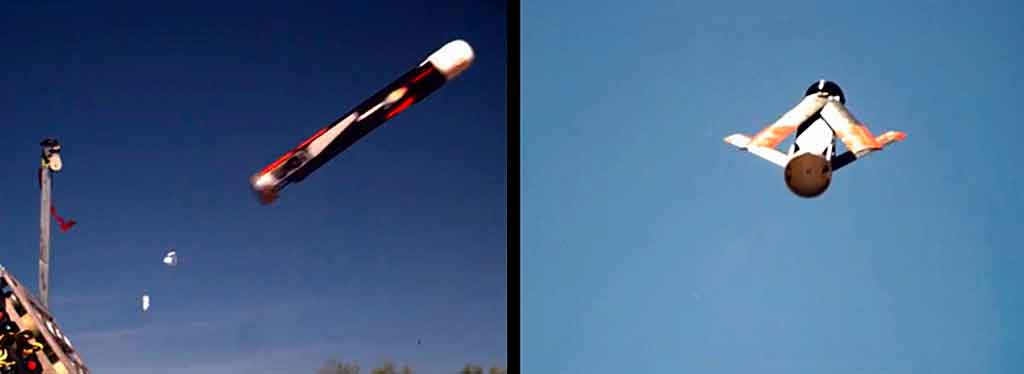
The U.S. Army has selected Raytheon’s Coyote unmanned aircraft system and Ku band radio frequency system (KRFS), to counter the escalating threat of enemy unmanned aerial vehicles (UAVs) in the skies above the battlefield.
Equipped with an advanced seeker and warhead, the Coyote-enabled system can successfully identify and eliminate threat UAVs when paired with an advanced electronically scanned array KRFS radar, which acquires and accurately tracks all sizes of UAS threats.
(See in Action! Watch Coyote destroy target UAVs. Equipped with an advanced seeker and warhead, the Coyote-enabled system can successfully identify and eliminate threat UAVs when paired with an advanced electronically scanned array (AESA) KRFS radar, which acquires and accurately tracks all sizes of UAS threats. Courtesy of Raytheon and YouTube. Posted on Jul 9, 2018.)
The most capable UAS in its class, Coyote is small, expendable and tube-launched.
It can be deployed from the ground, air or a ship.
Coyotes can be flown individually or netted together in swarms, and they are adaptable for a variety of missions including surveillance, electronic warfare and strike.

“Enemy unmanned aircraft are among the biggest threats facing our ground troops today,” said Dr. Thomas Bussing, Raytheon Advanced Missile Systems vice president.
“Our small, expendable Coyote provides the Army with an affordable and highly effective solution for countering the growing UAS threat.”
In addition to Department of Defense (DoD) missions, the versatile Coyote is also used by the National Oceanic and Atmospheric Administration (NOAA) for hurricane tracking and modeling.

Raytheon is currently finalizing development of advanced Coyote variants that will fly faster and farther.
Because of an urgent operational need, the Army is expected to use Coyote as a counter-UAS solution before the end of the year.

The KRFS radar in use today is a multi-mission radar providing rocket, artillery and mortar, sense and warn, and counter-UAS mission capabilities.
Its accuracy enables significant UAS mission performance including precision fire control and UAS swarm scenarios at tactically significant distances.
(Originally called the LOw-Cost Unmanned aerial vehicle Swarming Technology (LOCUST), the Coyote is a prototype tube-launched UAV, making possible the launch of multiple swarming UAVs to autonomously overwhelm and adversary. Courtesy of usnavyresearch and YouTube. Posted on May 23, 2016.)

“The warfighter needs a complete mission solution to successfully counter UAS threats,” said Dave Gulla, Raytheon Mission Systems and Sensors vice president.
“Our quickly transportable system that tracks low-swarming threats with KRFS and eliminates those threats with Coyote, is a game changer for the U.S. Army.”
Raytheon Company has delivered 40 KRFS radars to date, with more than 32 deployed by the Army and is upgrading the systems for extending capability and ensuring support of the soldier beyond 2025.
Learn More…
(Learn More. See launches of Coyote and Silver Fox unmanned aircraft systems from every angle. Courtesy of Raytheon and YouTube. Posted on Apr 26, 2016.)
















